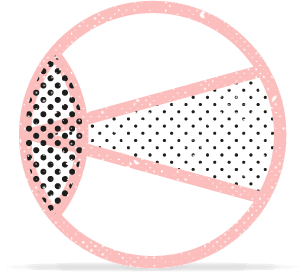Myopia Management
Myopia, also known as short-sightedness, is when distant objects appear blurred due to the axial elongation of the eyeball – the eye getting longer. With the eye being longer than normal, light is unable to focus on the central retina causing distant objects to look blurred and out of focus. As the eye develops during childhood, children with myopia are at risk of their vision worsening.

What is Myopia?
Myopia, also known as short-sightedness, is when distant objects appear blurred due to the axial elongation of the eyeball – the eye getting longer. With the eye being longer than normal, light is unable to focus on the central retina causing distant objects to look blurred and out of focus. As the eye develops during childhood, children with myopia are at risk of their vision worsening.
Myopia has become a global epidemic, currently 30% of the world’s population has myopia which is predicted to increase to 50% by 2050 and 10% of the population are expected to have high myopia.

What Causes Myopia?
The cause of myopia can be a result of family history, lifestyle, or a combination of the two. Myopia usually develops in childhood and is more common in children who have parents with myopia, although there is not always a family history.
Evidence also suggests that extended periods of high concentration, close vision tasks can increase symptoms, and other factors such as spending more time indoors and the use of smartphones, tablets and computers can also contribute.
What Are the Symptoms of Myopia?
Noticing symptoms in children can be difficult as they don’t realise their vision isn’t ‘normal’. In some cases, a child may not have any symptoms which is why regular eye examinations are important, however there are a few signs that parents, family members and teachers can look out for that may indicate myopia. These include regularly rubbing the eyes, sitting too close to the TV, struggling to see the board in school and complaining of headaches or eye strain.
Myopia progresses as we grow, with prescription changes slowing down in the late teens to early 20’s. Myopia management needs to be considered throughout childhood to slow progression earlier.
What Risk Factors Are Associated with Myopia?
Developing myopia guarantees the need for lifelong eyecare, with regular eye examinations and vision correction needed.
However, those with a high myopic prescription are at risk of developing eye conditions such as retinal detachment, myopic maculopathy, glaucoma, and cataracts which can lead to irreversible sight loss.
How is Myopia Corrected?
There is no cure for myopia, however with regular eye examinations and the use of specialist myopia management products we can slow the progression of the condition. These products have undergone extensive trials and results have shown that with consistent use, myopic progression was slowed by up to 60%.
MiYOSMART Spectacle Lenses
MiYOSMART spectacle lenses are an innovative new lens that use Defocus Incorporated Multiple Segments (D.I.M.S) Technology. These are a multiple defocus segments, evenly distributed across the lens to create a peripheral retinal defocus. This structure helps to slow the growth of the eyeball whilst providing clear vision, and the results of the 2-year clinical trial showed they slowed the progression of myopia by up to 60%.
These lenses are designed specifically with children in mind as they are made from a lightweight polycarbonate making them durable and impact resistant.
MiSight® Contact Lenses
MiSight® contact lenses are a soft, daily contact lens by Coopervision. These daily disposable contact lenses have a unique ActivControl® technology featuring correction and treatment zones. The correction zones provide vision correction, while the treatment zones provide myopic defocus to control the axial elongation.
These lenses are advised to be worn for a minimum of 6 days per week and following a 3-year trial is proven to reduce myopia by up to 59%. 
Orthokeratology
Orthokeratology, or Ortho-K contact lenses are a rigid gas permeable lens that is used to change the shape of the front of the eye overnight. The lenses are designed to be worn while you sleep and removed in the day, providing vision correction without the need for glasses or contact lenses.
Ortho-k is also used as a method of myopia management as it as been shown the control the progression of myopia.
How Else Can You Help Your Child?
Alongside myopia management products there are several lifestyle changes that your child can adopt that can be beneficial to their eye health.
- Encourage more outdoor activities and reduce screen time where possible.
- When reading books or using digital devices we advise holding them more that 30cm away from their eyes.
- Take regular breaks from near work every 30 minutes where possible.
- Regular eye examinations are essential for everyone and are key to monitoring the progression of myopia.
At The Eye Place we are passionate about helping children and parents understand myopia and slowing down myopia progression. If you are interested in finding out more about myopia management for your children, or have any questions contact your local Eye Place branch.
